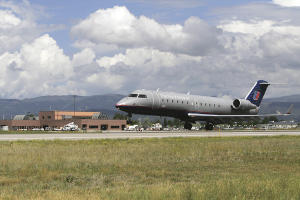Selecting Air Carrier Service – Best Questions to Ask Meridian, MS City Leaders Studying New Airline Services
Questions to Help Select the Best Air Service
When Selecting Air Carrier Service, Asking the Right Air Service Questions is Critical!
Meridian, Mississippi has a fantastic opportunity according to a news article that came out recently. { http://www.meridianstar.com/local/x1760092838/Airlines-submit-bids-to-serve-Meridian-other-MS-markets } They are in the process of selecting air carrier service. They have two air carriers that have bid to serve their community giving them an option in selecting air carrier service. While I don’t have access to the two airline bids from ExpressJet and Aerodynamics Incorporated, I have a hunch which would be the better choice and on the steps taken to give the selected service the best chance for success.
Successful Air Service is more than just having the best carrier(s) serving your community!
Before I suggest the best questions to help lead to a good for selecting air carrier service, I do want to emphasize that getting to a result of successful air service takes a lot more than deciding on the operating carrier. Air service isn’t just an “acquire air service and it will be sustainable” proposition. Consistent and effective community support by a mobilized community is critical to success. Investing in a professional air service support program several months before the start of new service is critical to an effective community effort. Airlines need to see air service succeed right away or they will move unprofitable air service and the plane serving your market to another market where they can make money.
Some Air Service Questions a Community Should ask when Selecting Air Carrier Service
Key Drivers of Air Service Success
Key Driver: 40%-60% of most passengers using local airports are local origination
Question: What are your top demand destinations from your local population?
Since Meridian does not have air service at this time, residents fly out of Jackson and other regional airports. However, data is available to show the destination of Meridian residents. Meridian should professionally analyze the data to help decide the best carriers for Meridian based on who will better serve the travel destinations of its residents.
Typically in today’s airline industry, flights use a hub airport which then feeds passengers to multiple other feed flights to get these passengers to their destination. About 70% (this can vary) of the passengers on the flight from your market to the hub market are going on via another flight from the hub to their destination and only 30% are flying to the hub and terminating their trip there. Matching air service with the best airline system to deliver the passengers to the top destination markets can help recapture local flyers from alternate regional airports and be a guide in selecting air carrier service.
Key Driver: Meridian is home to a key military installation, the Meridian Air Station
Question: Will the carrier(s) offer a military air rate and what will this be?
Recapturing a good part of these local passengers, including military service members, will be critical to successfully supporting the local airport flights. If the military rate is not competitive with alternate competing regional airports like Jackson MS, the recapture of enough of these air passengers won’t occur and your air service will struggle. Unprofitable air service would put the air service in jeopardy of being cancelled. Military traffic is a key part in selecting air carrier service.
Key Driver: Sustainable Air Service in the long-term
Question: Which air carrier option will best help growth to larger aircraft in the future?
Due to economics and plane costs, smaller regional jets of less than 70 seats are finding it harder and harder to deliver a profit to operating carriers. Currently there is a retirement of more and more of the aircraft with fewer than 70 seats. These aircraft are not being replaced by the airlines. Meridian is choosing between two operators who would use 50 seat regional jets. To avoid making an air carrier choice that could mean losing air service after just four or five years, Meridian needs to what service provides the best growth opportunities when selecting air carrier service. The community will need to create or capture a higher level air passenger demand at the local airport. Meridian will likely need to support air service on 70 seat or larger aircraft in the not too distant future if they want commercial air service long-term. Meridian needs to decide the present, but with an eye to the future.
This idea of Meridian building their air service with the future in mind is also critical feature in selecting air carrier service. I caution Meridian against just thinking about thinking their choice from the two air carrier options is their only key air service decision. Unless Meridian puts in a formal air service support effort that they intend to continue long-term, they will not position their flights successfully for the air service industry of the future. Their initiative will just create an air service “Episode” for a few years instead of an air service legacy that will drive economic benefits thru their community flights for the long-term.
I hope Meridian uses futurist thinking in their selecting air carrier service decision-making process. Further, Meridian should engage professional assistance to help and support their decisions. These questions are just a sample of what I think Meridian should ask in regards to successfully re-establishing commercial air service in Meridian, Mississippi. Other questions I would suggest asking with an eye to long-term commercial air service access for the Meridian region. Professional advice can help ask the right questions.
Scott Stewart is the principle of Community Flights; an air service support, development and management company. Community Flights works with communities, organizations or businesses on leveraging the great economic asset that air service is for economic gain. Scott formed Community Flights in January 2013 to mobilize community support efforts and help clients, bridge the “air service understanding gap” with the airlines to create an airline and community win-win air service support and performance environment. You can find more info about Community Flights at www.communityflights.com. You can contact Scott Stewart at scott@communityflights.com .











